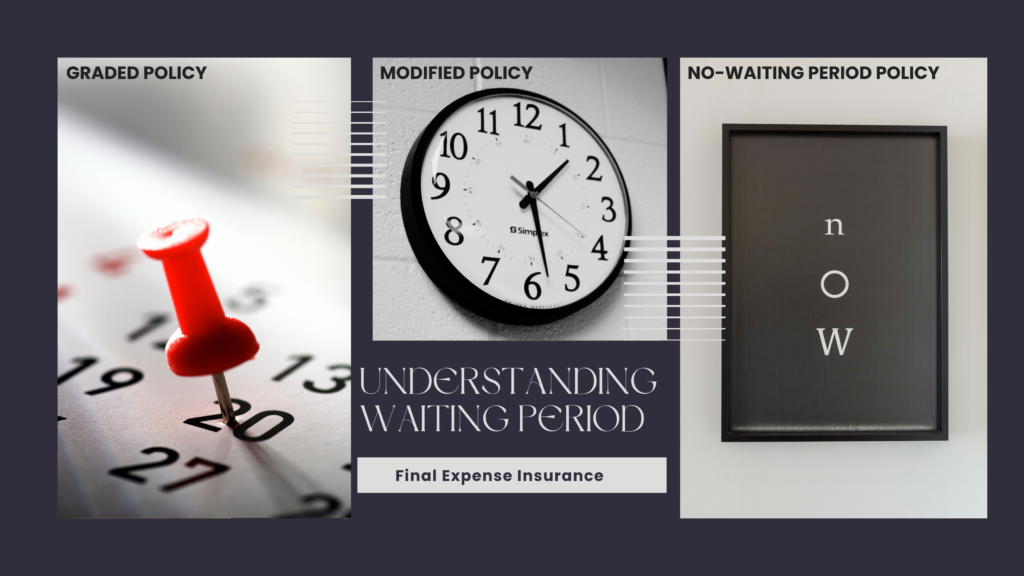Life Insurance Grace Period : What You Need to Know?
Life Insurance Grace Period : What You Need to Know ? Understanding Life Insurance Grace Period, Policy Lapses, and Reinstatement Options Life insurance, including final expense policies, provides financial protection for your loved ones by covering end-of-life costs like funeral expenses and medical bills. However, maintaining coverage requires consistent premium payments. Missing a payment can create concerns about the validity of your policy and its benefits. This article explores what happens if you miss a payment, the role of a life insurance grace period, how to prevent a policy lapse, and steps to reinstate your coverage if it lapses. What Happens When You Miss a Payment? Missing a payment on your life insurance policy doesn’t automatically cancel your coverage. Most insurers include a grace period—a critical buffer that gives you extra time to make overdue payments while keeping your policy active. However, if payments remain unpaid by the end of the grace period, your policy may lapse. Immediate Effects of a Missed Payment Grace Period Activation: Once a payment is missed, a grace period begins, allowing extra time to make payments. Temporary Claim Suspension: Some insurers may temporarily pause claims processing until premiums are paid. Risk of Policy Lapse: Failure to pay within the grace period may result in losing your policy entirely. Understanding Life Insurance Grace Period A life insurance grace period is the time insurers provide to pay overdue premiums without canceling your policy. Key Facts About Grace Periods Typical Duration: Grace periods usually range from 30 to 60 days, depending on the insurer and policy terms. Continued Coverage: Policies typically remain active during the grace period, ensuring your beneficiaries are still eligible for death benefits. Insurer Notification: Providers are required to inform policyholders of missed payments and the details of the grace period. What Happens If the Policy Lapses? If you don’t make the overdue payment within the grace period, your final expense policy will lapse. This means your coverage will terminate, and your beneficiaries will no longer be entitled to receive the death benefit. Consequences of a Policy Lapse: Loss of Coverage: Your loved ones won’t have access to the financial support promised by the policy. Forfeiture of Premiums Paid: Any premiums paid before the lapse may be forfeited unless your policy includes a cash value component. Reinstatement Requirements: To regain coverage, you may need to go through a reinstatement process, which could involve additional costs or stricter eligibility criteria. Reinstating a Lapsed Life Insurance Policy Reinstatement allows you to reactivate a lapsed final expense policy, typically within a specified time frame. However, the process can vary depending on the insurer and the length of time since the lapse. Steps to Reinstate Your Policy: Contact Your Insurer: Notify your insurance company as soon as possible to begin the reinstatement process. Pay Overdue Premiums: Most insurers require you to pay all missed premiums, along with any applicable fees or interest. Submit Health Information (if required): Some insurers may require updated health information or a new medical questionnaire, especially if a significant amount of time has passed. Review Reinstatement Terms: Understand any changes to your policy’s terms, such as increased premiums or exclusions. How Long Do You Have to Reinstate a Policy? The time frame for reinstatement depends on the insurer and policy terms. Some insurers allow reinstatement within a few months, while others may offer up to a year or more. However, the longer you wait, the more challenging reinstatement may become, especially if new health conditions arise. How to Avoid Missing Life Insurance Payments Preventing missed payments is the best way to ensure your final expense policy remains active and provides uninterrupted coverage. Tips to Avoid Missed Payments: Set Up Automatic Payments: Enroll in autopay to ensure premiums are deducted from your bank account or credit card automatically. Align Payments with Income Schedule: Choose a payment schedule (monthly, quarterly, or annually) that aligns with your income cycle. Use Payment Reminders: Set calendar alerts or request reminders from your insurer before payments are due. Build an Emergency Fund: Maintain a small savings cushion to cover premiums during unexpected financial challenges. Communicate with Your Insurer: If you anticipate difficulty making a payment, contact your insurer immediately. Many companies offer temporary payment extensions or assistance programs. What If You Can’t Afford the Premiums? If financial difficulties make it hard to afford your premiums, there are steps you can take to avoid losing your coverage: 1. Request a Lower Coverage Amount: Most insurers allow you to reduce your coverage, which lowers your premiums. For example, switching from a $20,000 policy to a $10,000 policy can make premiums more manageable. 2. Opt for a Flexible Payment Plan: Some insurers offer flexible payment options, such as switching from annual payments to monthly payments. 3. Utilize Policy Riders: Certain policies include riders, such as a waiver of premium rider, which suspends payments during periods of disability or financial hardship. Frequently Asked Questions About Life Insurance Grace Periods 1. Will My Policy Be Canceled Immediately After a Missed Payment? No, most insurers provide a grace period of 30 to 60 days during which you can make the overdue payment without losing coverage. 2. Can I Reinstate My Policy After a Lapse? Yes, most insurers allow reinstatement within a specified time frame. However, you may need to pay missed premiums, provide health information, or meet other requirements. 3. What Happens to My Premiums If My Policy Lapses? If your policy lapses, previously paid premiums are typically forfeited unless your policy includes a cash value component. 4. Can I Pause My Policy If I Can’t Pay Temporarily? Some insurers may allow temporary payment suspensions or offer financial assistance programs. Contact your provider to explore your options. Final Thoughts Missing a payment on your final expense insurance policy doesn’t have to mean losing your coverage. By understanding grace periods, reinstatement options, and ways to avoid missed payments, you can ensure your policy remains active and continues to protect your loved ones. Key Takeaways: Most policies include









